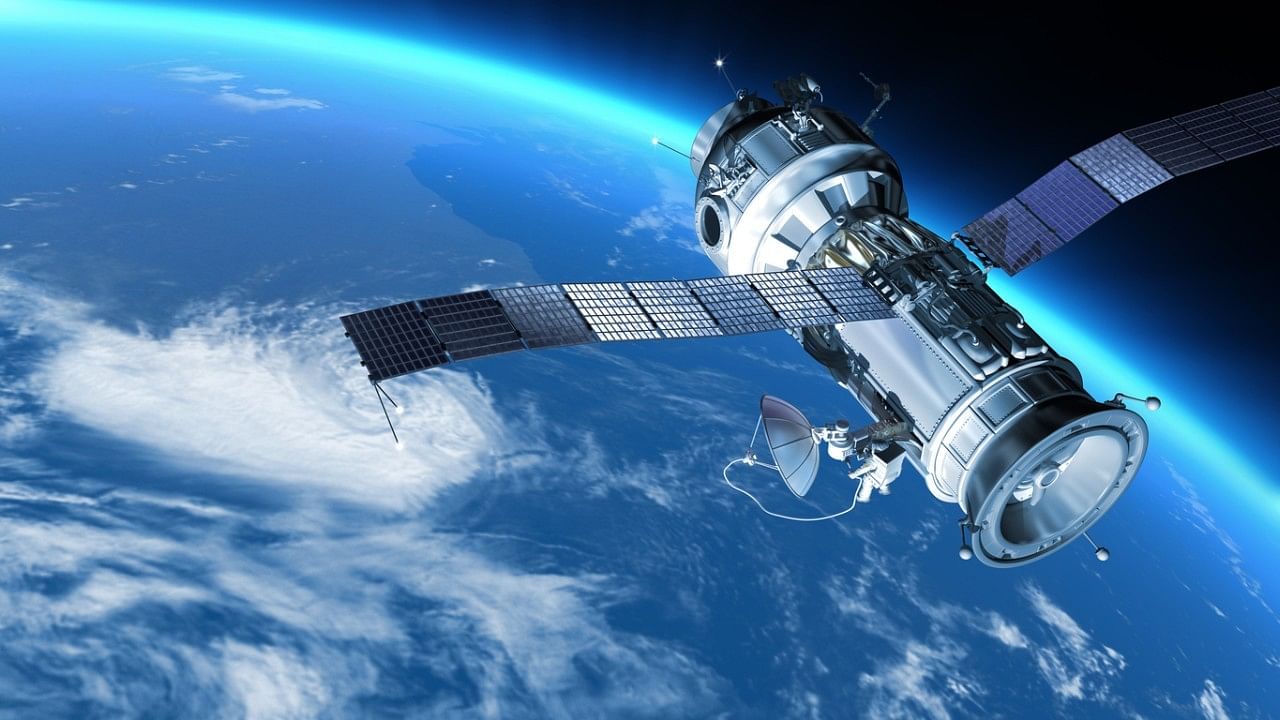
Representative image of a communication satellite.
Credit: iStock Photo
New Delhi: Want a satellite picture of your backyard? It may soon be possible as Bengaluru-based space start-up Pixxel plans to unveil an online software suite to browse through images of earth captured by its satellites and also order customised pictures.
In an interaction with PTI editors here, Pixxel Space Chief Executive Officer and co-founder Awais Ahmed said the start-up's earth observation studio 'Aurora' was part of efforts to make space-based data accessible to the common person for a small fee.
Pixxel's earth observation studio is expected to go live later this year and make the hyperspectral images of the earth taken by its satellites and data analysis accessible to everyone.
"It would be as simple as using Google Earth but pictures and satellite imagery would be much more advanced," Ahmed, the 26-year-old CEO, who is among the handful of entrepreneurs who are making a mark in the space sector which was opened to private players about four years ago, said.
Users of the Aurora suite can browse through the satellite images already available in the database or place a "tasking order" for Pixxel's satellites going around the earth in the lower earth orbit.
"I want to order an image for say Chikmagalur in the next week or next two weeks, then it will go to our satellites and they will deliver it, as long as you can pay for it," Ahmed, who built the first satellite while still completing his masters in mathematics from BITS Pilani, said.
Pixxel has launched two satellites— Shakuntala and Anand, both capturing images of the earth in over 200 wavelengths and detecting minute changes taking place on the planet.
"Come October or November of this year, anyone will be able to create an account online on our website, Pixel.Space/Aurora to access images of the earth taken by our satellites," Ahmed said.
The two satellites— Shakuntala and Anand, launched by Elon Musk's SpaceX and ISRO's PSLV respectively, were pathfinder spacecraft, demonstrating the company's capabilities to deliver on high quality hyper-spectral images.
Pixxel plans to launch six satellites
Later this year, the company's first set of commercial spacecraft will deliver earth images to its clients who range from the Ministry of Agriculture in India and the National Reconnaissance Organisation of the US.
The start-up also has plans to launch 18 more satellites next year, including a slightly heavier Honeybee spacecraft that will carry visible and shortwave infrared camera to increase the wavelength range of the satellite.
"The sensors on these satellites are equipped to provide hyperspectral imagery of 250 plus bands in the 470-2500 nm range at a five-metre ground sampling distance," the company said.
Ahmed said conventional satellites can capture images in visible and some infrared range.
"Hyperspectral is taking all of this light coming in the visible and infrared range, and splitting them into continuous, very minute lengths," he said.
"If, for example, I'm looking at a plant with a normal camera, I can tell that's a plant and there's a leaf there. But if a hyperspectral camera is capturing that, it has broken it into so many different wavelengths that I can now see if there are signs of pest infestation there, or if it's irrigated well enough and so on," Ahmed added.
"So that's, in a basic sense, you're going from three wavelengths from human eyes to about 300 wavelengths in hyperspectral, which is just enabling us to see way beyond human sight," said Ahmed.